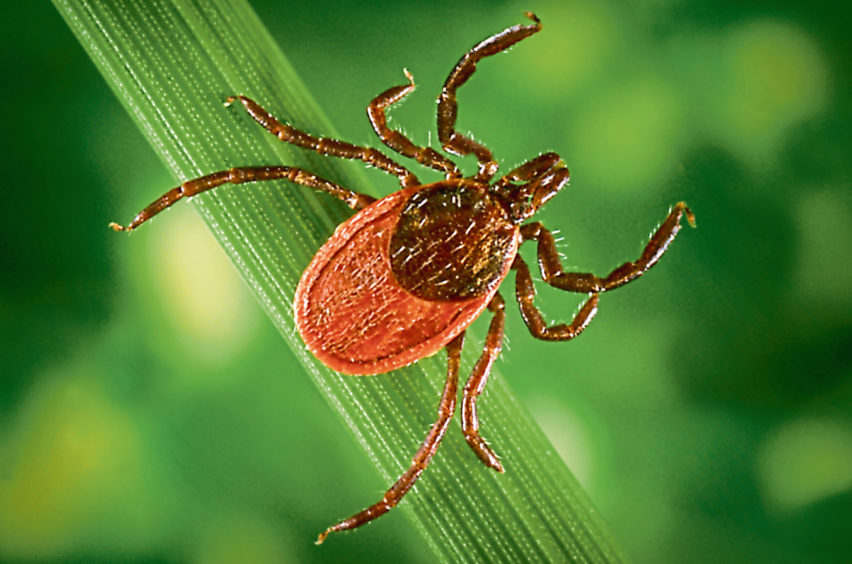Cases of Lyme disease have “increased rapidly” in the UK and may be three times more common than the current annual estimate, a study of GP records suggests.
Lyme disease was found in every UK region, with Scotland having the highest number of cases, followed by the south-west and south of England.
Researchers from the UK and Germany looked at a primary care database holding anonymised records of 8.4 million people registered with GP practices between 2001 and 2012 – about 8% of the general population.
A graph compiled by The Courier’s data analyst Lesley-Anne Kelly shows that Scotland leads the way with more cases than in England and Wales combined.
Cases of Lyme disease in Scotland peaked in 2010, with 5.85 per 100,000 people. Back then, there were 1.64 in England and Wales.
By 2017, when a total of 4,083 cases were detected, the gap reduced to 3.08 in Scotland and 2.7 in England and Wales.
Of these, 1,702 (41.7%) had “clinically diagnosed” Lyme disease, 1,913 (46.9%) had “treated suspected” Lyme disease, and 468 (11.5%) had “treated possible” Lyme disease.
They found the annual total number of cases recorded increased almost ten-fold over the period, from 60 to 595, suggesting a UK estimate of 7,738 cases in 2012.
The current official estimate for the UK is around 2,000-3,000 new cases of Lyme disease annually based on laboratory data in England and Wales and centralised reporting in Scotland.
If the numbers continued to increase post-2012 at a similar rate, they believe the UK could see an excess of 8,000 cases this year.
Lyme disease has become the most common tick-borne infection in many parts of Europe and the USA and high rates in nearby countries had prompted fears the current UK estimate was too low.
The bacterial infection is spread to humans via bites from infected ticks, and symptoms can include a circular red rash often described as a bullseye on a dartboard.
Some people get flu-like symptoms instead of the rash, and if it is not treated promptly with antibiotics it can cause pain and swelling in joints, nerve and heart problems and trouble concentrating for years after.
Former England rugby captain Matt Dawson was bitten by a tick in 2016 and said he was struggling to exercise as much he would like two years after.
Experts say prevention is the best way to ward off the disease, urging people to avoid dense vegetation, tuck their trousers into their socks and use tick repellents.
The high numbers in Scotland could be explained by “its wetter climate and popularity as a hiking destination”, the researchers said.
Study author Dr Victoria Cairns, a retired medical statistician from Oxford, said the disease has often been called “the great imitator” because it mimics other symptoms.
She said: “I think GPs certainly know about it, the issue is really for the public to know so that they go to the GP to get diagnosed.
“Because that’s really the big problem with Lyme disease – some people don’t get diagnosed quick enough and then they go on to get long-term problems.”










